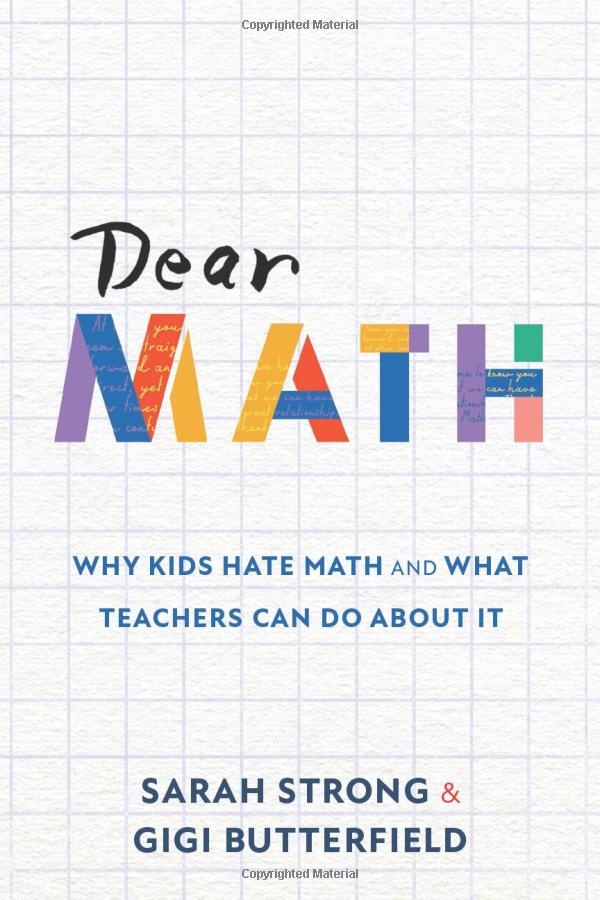
Dear Math: Why Kids Hate Math and What Teachers Can Do About It by Sarah Strong & Gigi Butterfield shows how teachers can use students’ “Dear Math” letters to get to know their students better and draw them into learning. There is an emphasis on creating a community of mathematicians in a project-based environment. Be sure to get a copy for any math teacher you know. Thanks, Sarah and Gigi.
1. Dear Math, You Are Dreadful
- Start by telling students that you need to get to know them as mathematicians so you can design and facilitate their math lessons. They will all write “Dear Math Letters” for you to read. To help them get started, give them one of the ten prompts listed on pages 25 and 26. For example, what is one way that math has helped you grow? As you read the letters, be prepared for a large dose of negativity, as math is not the favorite subject of most students.
- As you read the letters, give feedback and look for connections and commonalities. As you teach, mention things from letters anonymously. Consider having students read each other’s letters. This will help develop empathy between students. Weekly letters should help you determine what was valuable and what wasn’t.
2. Dear Math, You Are Hierarchical
- The hierarchy here comes from the natural sorting of ability from high to low that happens in classes generally and perhaps more often in math classes. The goal, then, is to disrupt any existing hierarchy or prevent it from happening. Disruption of this metaphor begins with forming close relationships with others. People with close relationships are not likely to compare themselves to each other. Being better connected also improves the quality of group work.
- Sara’s main tool is what she calls “Belongigness Buddies,” although you can call it something else. Buddies check in on each other daily in person and using social media tools. While the check-ins largely involve content, students are encouraged to include feelings. The teacher also buddies with students who have attendance issues. Absent students can use FaceTime or Zoom to attend class virtually.
3. Dear Math, You Are Unnecessary
- Teachers, in general, need to be prepared for the “why do we have to know this?” question. Use Internet search if you need to, and it’s ok to say, “I don’t know, but think of this concept as a puzzle that will be good for your ability to solve real problems.” Knowing why they need to learn something adds to a greater sense of agency, the ability to construct new knowledge, and the ability to look critically at new information.
- Math isn’t pointless and shouldn’t feel that way. Sarah likes to start classes with an image of some sort. She also makes use of story problems, also known as word problems but with more captivating stories. After they read the story, she asks, what is this story about? What are we trying to solve for? What might a potential answer look like? (estimation)
4. Dear Math, You Are Intimidating
- The three sources of intimidation or anxiety are home, society, and classrooms. Often times a parent’s doubt about their own math skills can contribute to a student’s feelings. Similar messages are also found in our media. Teachers and faster learners are also a source and these are feelings that lead to lower performance.
- The goal is to design class activities to disrupt intimidation. Sarah describes a “Daily Discourse” activity designed to do this. It’s a ten to fifteen-minute activity led by students, with all students taking turns leading the discourse and taking notes. Gigi reminds us that the opposite of intimidation is encouragement.
DrDougGreen.com If you like the summary, buy the book





